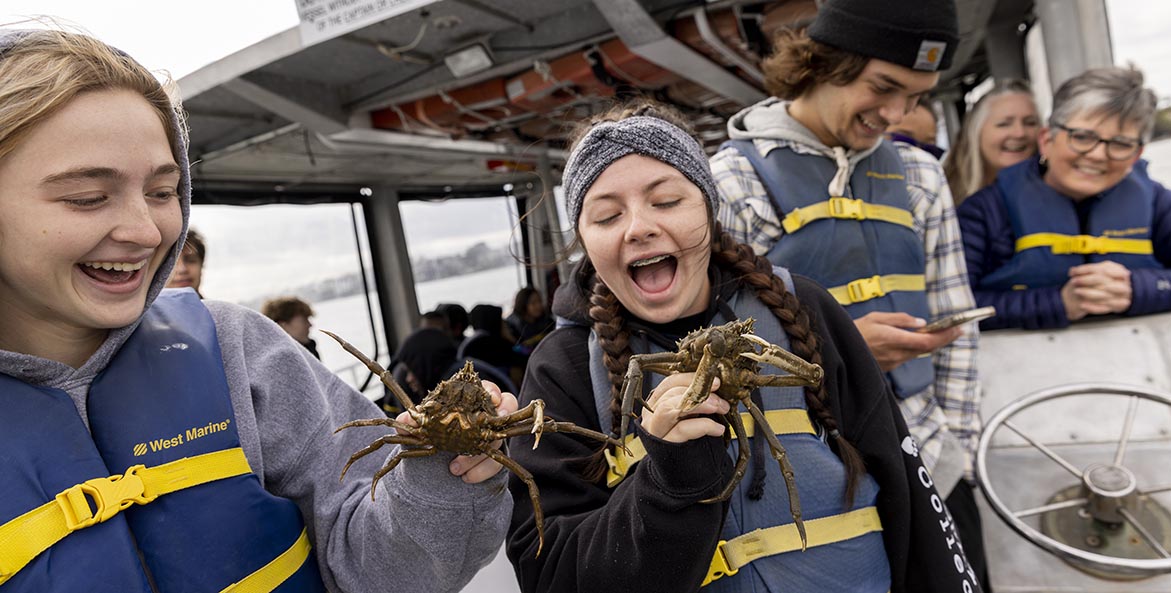The simple idea of getting kids “out on the water, messing around in boats” has remained at the core of CBF’s award-winning environmental education programs for 50 years—an anniversary milestone celebrated in our latest issue of Save the Bay magazine. More than 1.5 million people have experienced CBF’s model of immersive, investigative learning to date. Two of them include CBF President Hilary Harp Falk, whose early experience as a CBF educator helped shape her path and approach to restoration, and CBF Vice President for Education Tom Ackerman, who explains why education is key to creating a lasting culture of environmental stewardship. Learn how CBF’s programs help achieve widespread environmental literacy by working with entire school systems and supporting teachers; inspiring students to take action through advocacy, art, research, and more; and creating lasting connections between watershed communities with real ramifications for restoration. Headlines this month include the release of the latest blue crab survey results, a major new scientific report assessing Bay restoration, and additional actions taken to protect striped bass, among others.
Inspired and want to join us in celebrating CBF Education’s 50th this year? There are still a few spots left for our Middle School Eco-Camp, Student Leadership Summer Expeditions for high schoolers, and Chesapeake Classrooms teachers professional development courses this summer. Sign up today!
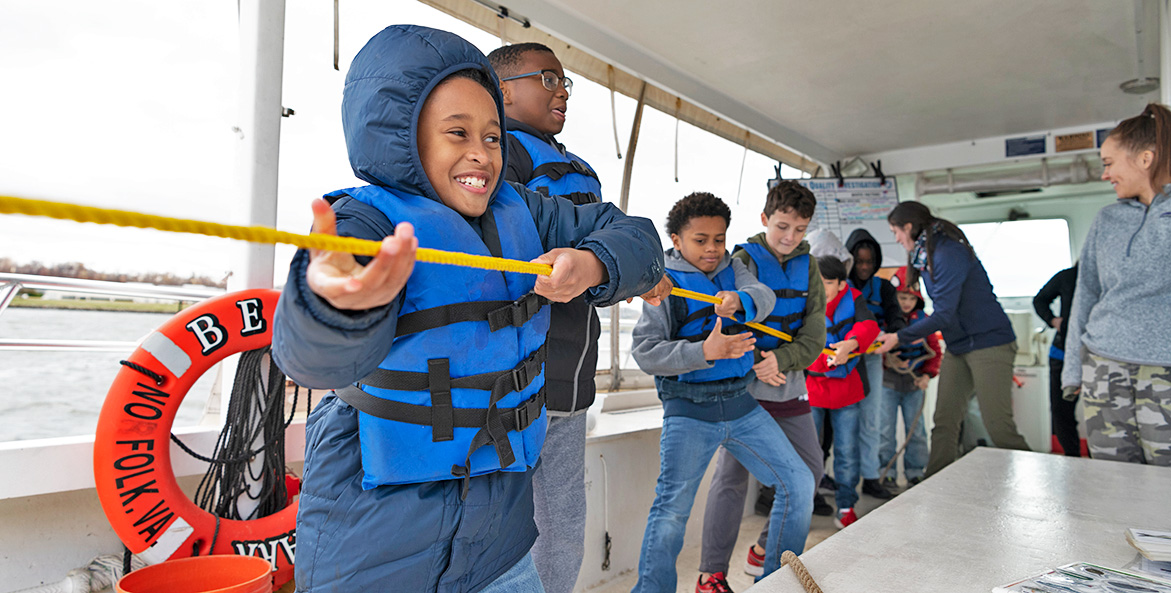
CBF students are active learners, hauling fishing gear aboard the Bea Hayman Clark education workboat to sort and study what lives in the tributaries of the Chesapeake Bay watershed.
Jay Fleming
Learning for Life
CBF Education is celebrating 50 years of bringing students, teachers, policymakers, and community members outside to learn through its award-winning programs. Vice President for Education Tom Ackerman reflects on education’s role in creating a lasting culture of environmental stewardship and giving people the tools to solve the complex challenges facing our watershed and our society.
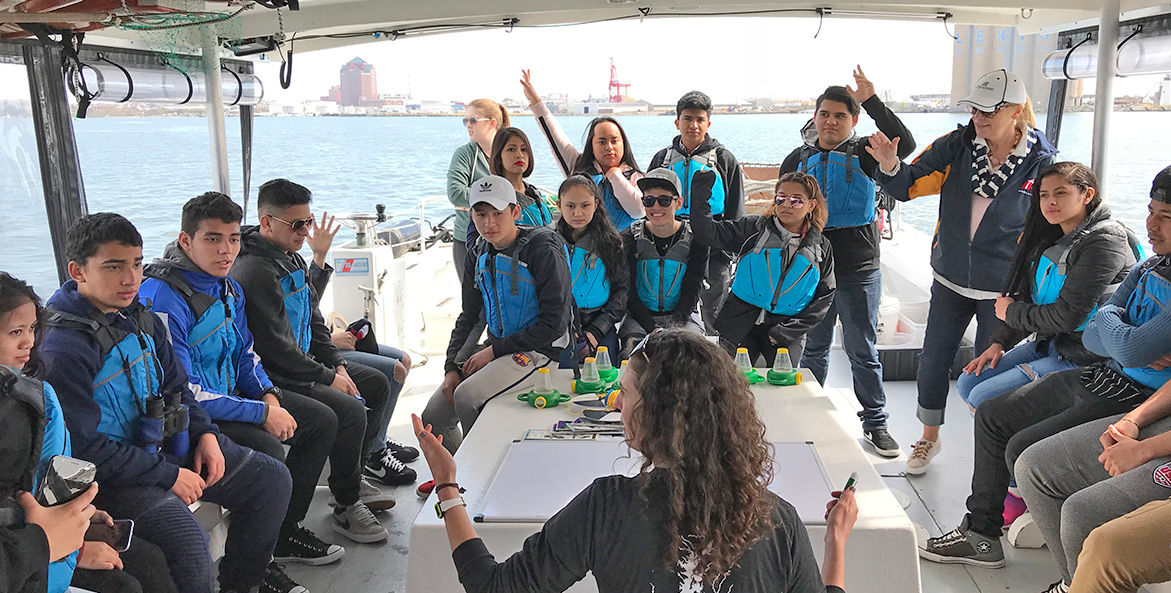
CBF's Education Program has introduced more than 1.5 million people, including countless students like these in Baltimore, to the wonders—and lessons—of our Bay and its watershed.
A.J. Metcalf/CBF Staff
Our Watershed Teacher
The lessons we learn “being there, immersed in our environment and our communities” are the ones that stick, writes CBF President Hilary Harp Falk. Falk’s early tenure as a CBF educator helped shape her path and her appreciation of the Bay and its communities. She says students can teach us a lot about solutions and optimism.
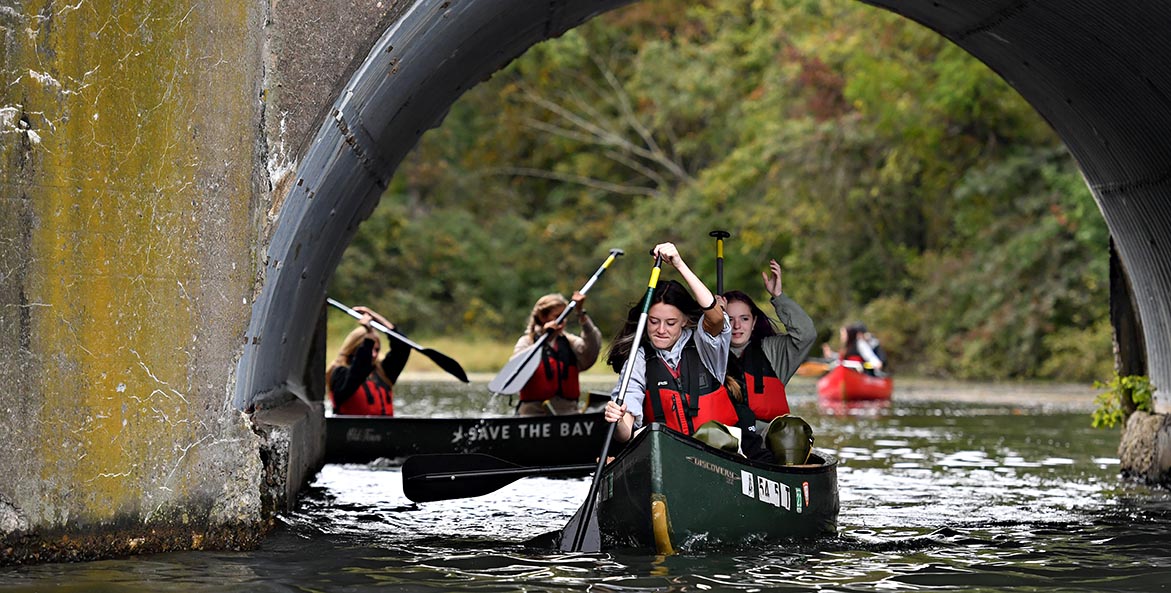
A fleet of canoes lets CBF's Education program bring its exploratory programs to the rivers, streams, and lakes in students' own backyards.
Dawn Sagert
Floating Classrooms
In the early days of CBF Education, it took some convincing to get school administrators to see the instructional value of a day spent out on the water. From reliable canoe fleets that reach backyard streams to the green boats of the future, floating classrooms continue to prove their worth across decades of outdoor learning.
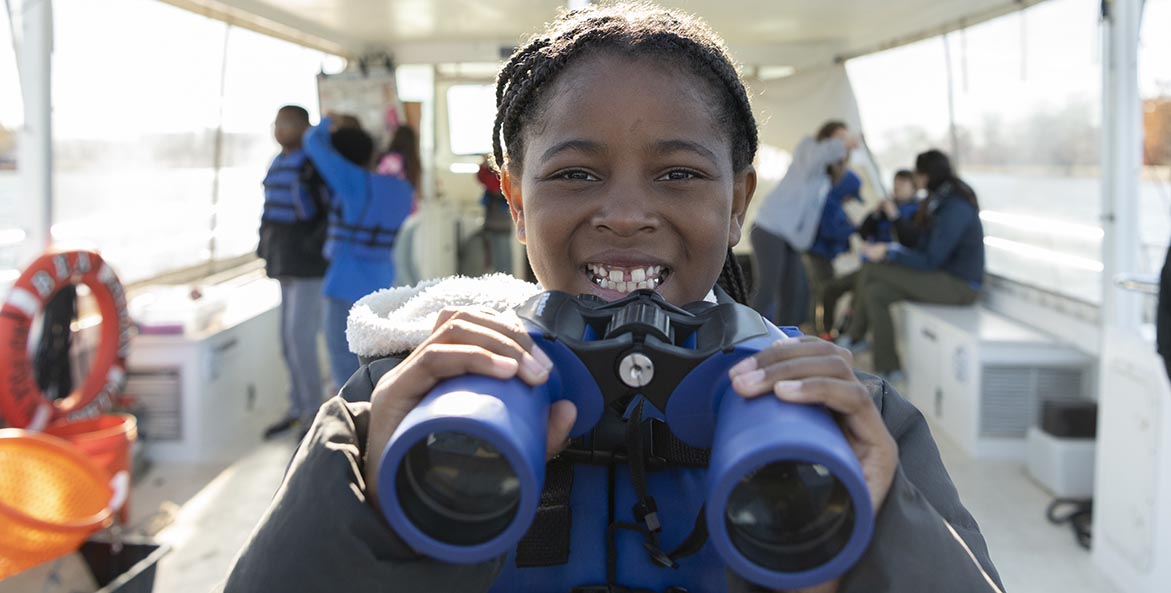
CBF's Education programs give students a rare and engaging opportunity to experience the Bay while meeting environmental literacy education standards.
Jay Fleming
A Quest for Environmental Literacy
The benefits of outdoor education to students and society are backed by a growing body of evidence. But achieving widespread access depends on supporting innovation—like the pilot Baltimore Outdoor Learning Network Initiative—and removing barriers for teachers and schools. CBF and many partners across the watershed continue working to make environmental literacy a reality for all students.
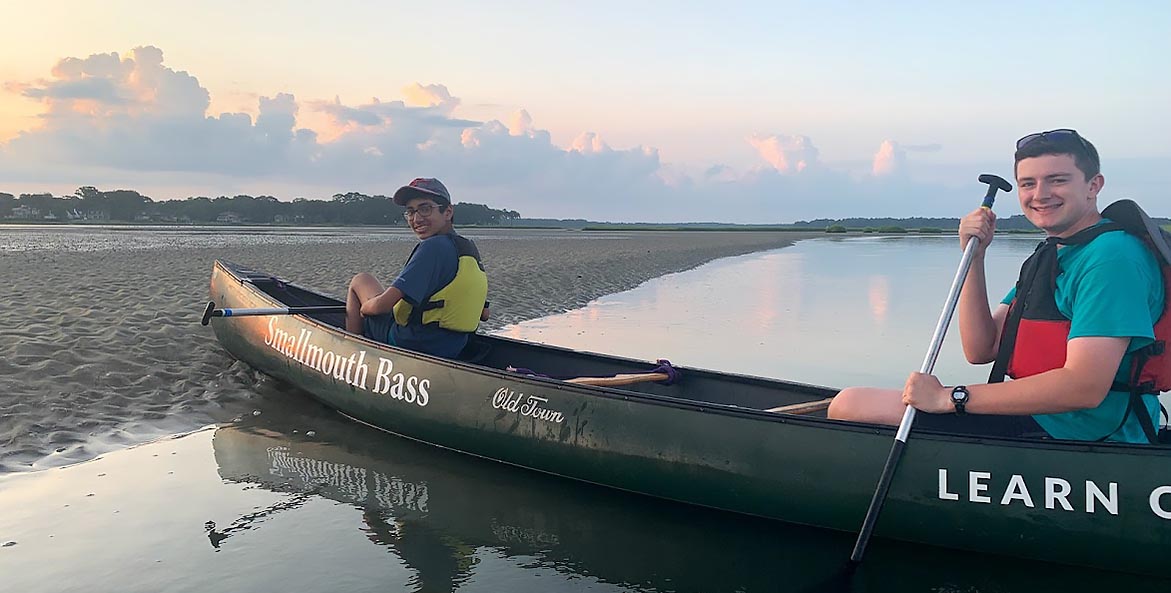
CBF's Student Leadership Program has provided high school senior Anmol Mital (left) with the opportunity to expand his knowledge of environmental issues affecting his local communities.
CBF Staff
The Un-Silent Generation
“We have a very strong voice. We haven’t learned to be silent yet,” says Bri Akuamoah-Boateng, a junior at Poolesville High School in Maryland. Through advocacy, art, scientific research, and many other avenues, CBF student leaders like Akuamoah-Boateng are taking action for their communities, their watershed, and their world.
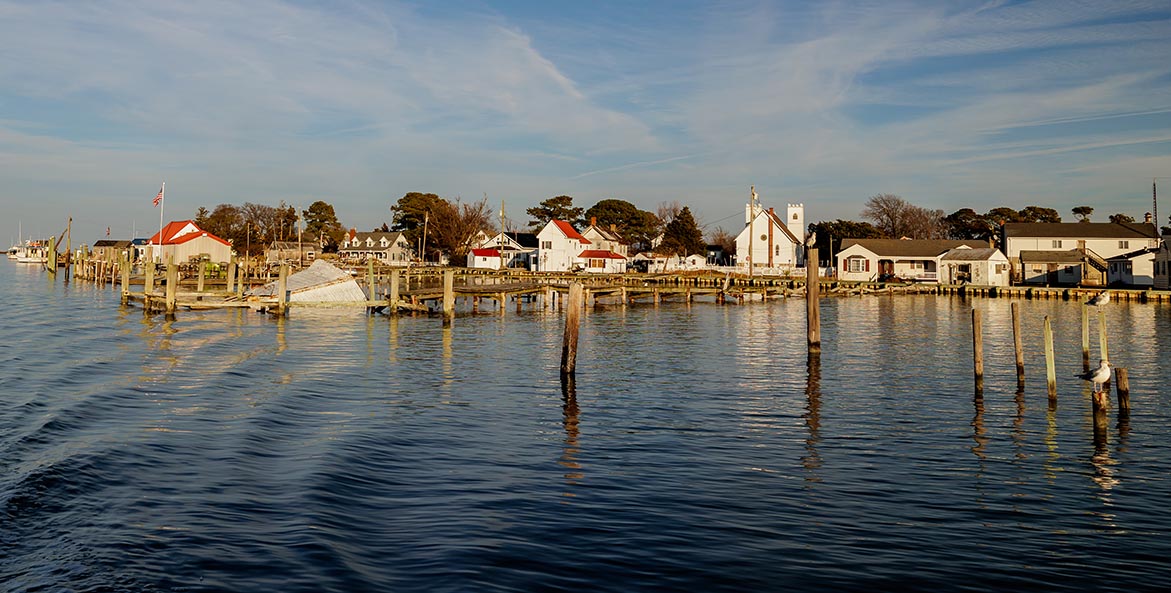
A remote island in the Chesapeake Bay, Smith Island and its community of watermen provides students from various backgrounds and hundreds of miles away with new perspectives about why the Bay needs to be saved.
Caroline Phillips
Thinking Like a Watershed
Every spring, a group of high school students from Rockingham County, Virginia, travels several hundred miles to Tylerton, Maryland, for a chicken barbecue to kick off the blessing of the fishing fleet. It’s just one example of the lasting bonds CBF education experiences have forged between seemingly disparate communities—and the watershed that connects us all.
In the News
- A major new scientific report assesses Bay watershed restoration: The comprehensive study looks at why progress has been slower than expected and opportunities to accelerate it. Read CBF President Hilary Harp Falk’s thoughts on the report’s findings in this Bay Journal op-ed.
- Annual blue crab survey results are released: Population numbers are up after all-time lows, but concerns remain.
- CBF wins forest protection lawsuit in Harford County, Maryland: The ruling over Abingdon Woods sends a message that sidestepping Forest Conservation Act requirements is unlawful.
- Report shows increased fishing pressure on striped bass: CBF applauds additional actions taken by the Atlantic States Marine Fisheries Commission to restore the population.
- Sen. Ben Cardin of Maryland announces plans to retire next year: Sen. Cardin has been a champion for the Chesapeake Bay since he began his public service career in 1967.
What You Can Do
- Looking to get inspired and learn outside with us this summer? We still have spots available on our Middle School Eco-Camp, Student Leadership Summer Expeditions for high schoolers, and Chesapeake Classrooms teachers professional development courses. Join us!
- Help us celebrate 50 years of learning outside by telling your CBF Education story. If you’re one of the 1.5 million explorers who have joined us for an education program, share your story today!
- Explore our brand new CBF Map Portal, including this special Education map showcasing the breadth and depth of CBF’s environmental education experiences over the years.
- No matter where you live in the watershed, you can take part in CBF's Clean the Bay Day this summer! Register now and take action to care for our watershed and all the creatures who call it home.
- Now through June 30, your gift to save the Bay will be worth DOUBLE thanks to a generous matching gift from our friends at The Orokawa Foundation!

